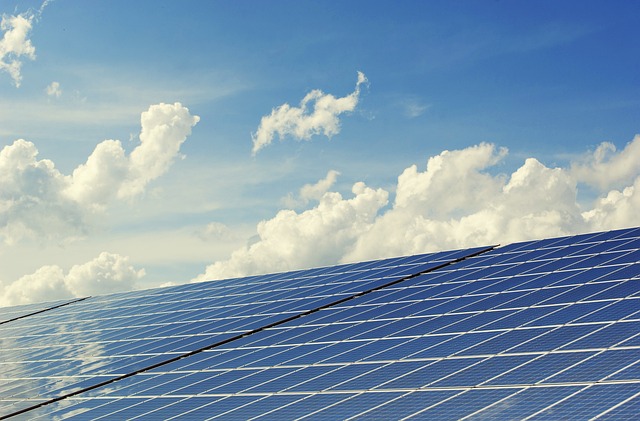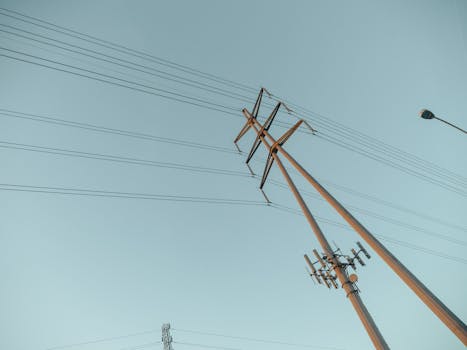“Maximize Your Power: Expert Tips for Wiring Solar Panels for Peak Performance!”
Wiring solar panels for optimal energy output is a crucial step in maximizing the efficiency and performance of a solar power system. Proper wiring ensures that the panels operate at their peak capacity, converting sunlight into electricity effectively. This process involves understanding the configuration of solar panels, including series and parallel connections, selecting the right gauge of wire, and ensuring proper connections to minimize energy loss. Additionally, considerations such as shading, orientation, and tilt angle play a significant role in enhancing energy output. By following best practices in wiring and installation, homeowners and businesses can harness the full potential of solar energy, leading to increased savings and a reduced carbon footprint.
Proper Panel Orientation
When it comes to maximizing the energy output of solar panels, proper panel orientation is a critical factor that cannot be overlooked. The positioning of solar panels directly influences their ability to capture sunlight, which in turn affects the overall efficiency of the solar energy system. To achieve optimal energy production, it is essential to understand the principles of solar panel orientation and how they relate to the sun’s path throughout the day and across different seasons.
First and foremost, the ideal orientation for solar panels is typically south-facing in the Northern Hemisphere and north-facing in the Southern Hemisphere. This positioning allows the panels to receive the most direct sunlight throughout the day. However, simply facing the panels in the correct cardinal direction is not enough; the angle at which the panels are installed also plays a significant role in energy output. The optimal tilt angle varies depending on geographic location, as it should be adjusted to capture the maximum amount of sunlight during both summer and winter months. For instance, in regions with higher latitudes, a steeper angle may be more beneficial during winter when the sun is lower in the sky, while a shallower angle may be advantageous in summer when the sun is higher.
Moreover, it is important to consider potential obstructions that could cast shadows on the solar panels. Trees, buildings, and other structures can significantly reduce the amount of sunlight that reaches the panels, thereby diminishing their efficiency. To mitigate this issue, a thorough site assessment should be conducted before installation. This assessment should take into account not only the immediate surroundings but also any potential future growth of vegetation or construction that could lead to shading. By ensuring that the panels are installed in a location free from obstructions, homeowners can maximize their solar energy production.
In addition to physical orientation, the time of day also affects solar panel performance. Solar panels generate the most electricity when the sun is at its peak, typically around noon. However, the angle of sunlight changes throughout the day, which means that the energy output will fluctuate. To optimize energy capture, some systems incorporate tracking mechanisms that adjust the angle of the panels in real-time, following the sun’s path across the sky. While these tracking systems can be more expensive, they can significantly increase energy output, making them a worthwhile investment for some users.
Furthermore, seasonal changes should also be taken into account when determining the best orientation for solar panels. As the seasons shift, the sun’s position in the sky changes, which can affect the angle at which sunlight strikes the panels. In regions with distinct seasons, it may be beneficial to adjust the tilt of the panels periodically to ensure they remain optimally positioned for maximum sunlight exposure. This can be done manually or through automated systems designed to adjust the angle based on the time of year.
In conclusion, proper panel orientation is essential for achieving optimal energy output from solar panels. By ensuring that panels are correctly positioned to face the appropriate direction and angle, while also considering potential shading and seasonal changes, homeowners can significantly enhance the efficiency of their solar energy systems. Investing time and resources into proper installation and orientation will ultimately lead to greater energy production, reduced electricity bills, and a more sustainable energy future.
Series vs. Parallel Wiring

When it comes to wiring solar panels for optimal energy output, understanding the differences between series and parallel configurations is crucial. Each method has its own advantages and disadvantages, and the choice between them can significantly impact the efficiency and performance of a solar energy system. To begin with, wiring solar panels in series involves connecting the positive terminal of one panel to the negative terminal of the next. This configuration increases the overall voltage of the system while maintaining the same current. For instance, if you connect two 12-volt panels in series, the total voltage output becomes 24 volts, while the current remains at the level of the individual panels. This higher voltage can be beneficial, especially when transmitting electricity over longer distances, as it reduces energy loss due to resistance in the wires.
On the other hand, parallel wiring connects all the positive terminals together and all the negative terminals together. This setup keeps the voltage constant while increasing the total current output. For example, if you connect two 12-volt panels in parallel, the voltage remains at 12 volts, but the current doubles, assuming both panels have the same output. This configuration can be advantageous in situations where shading might affect one panel more than the other. In a parallel setup, if one panel is shaded and produces less current, the other panel can still operate at its full capacity, thus minimizing the overall impact on the system’s performance.
However, while both configurations have their merits, they also come with certain drawbacks. Series wiring can lead to a situation known as the “Christmas light effect,” where if one panel underperforms due to shading or damage, it can drag down the performance of the entire string. This is because the current flowing through the series circuit is limited by the panel with the lowest output. Conversely, while parallel wiring allows for better performance in shaded conditions, it requires thicker wires to handle the increased current, which can add to installation costs and complexity.
Moreover, the choice between series and parallel wiring can also depend on the specific requirements of the inverter being used. Most inverters have a maximum input voltage and current rating, which must be adhered to in order to avoid damage. Therefore, when designing a solar panel system, it is essential to consider the specifications of the inverter alongside the desired configuration. In some cases, a combination of both series and parallel wiring, known as a series-parallel configuration, may be the best solution. This approach allows for increased voltage while also providing redundancy in case one panel underperforms.
Ultimately, the decision on whether to wire solar panels in series or parallel should be based on a careful assessment of the installation environment, the specific energy needs, and the characteristics of the solar panels and inverter being used. By understanding the implications of each wiring method, solar energy users can optimize their systems for maximum efficiency and reliability. In conclusion, whether opting for series or parallel wiring, the key lies in aligning the configuration with the overall goals of the solar energy system, ensuring that it operates at its best under varying conditions.
Choosing the Right Inverter
When it comes to wiring solar panels for optimal energy output, one of the most critical components to consider is the inverter. The inverter plays a pivotal role in converting the direct current (DC) generated by solar panels into alternating current (AC), which is the form of electricity used by most household appliances. Therefore, selecting the right inverter is essential for maximizing the efficiency and performance of your solar energy system.
To begin with, it is important to understand the different types of inverters available on the market. The three primary types are string inverters, microinverters, and power optimizers. String inverters are the most common choice for residential solar systems. They connect multiple solar panels in series, forming a “string.” While they are generally more cost-effective, their performance can be affected by shading or dirt on any single panel in the string. In contrast, microinverters are installed on each individual panel, allowing for independent operation. This means that if one panel is underperforming due to shading or other issues, it does not significantly impact the overall system output. Power optimizers, on the other hand, work in conjunction with string inverters by optimizing the performance of each panel while still allowing for a centralized inverter setup.
Once you have a clear understanding of the types of inverters, the next step is to assess your energy needs and system design. This involves calculating your household’s energy consumption and determining the size of the solar array required to meet those needs. The inverter’s capacity should match or slightly exceed the total output of your solar panels to ensure that it can handle peak production times without being overloaded. For instance, if your solar array is designed to produce 6 kW, selecting an inverter with a capacity of 6 kW or slightly higher will provide a buffer for efficiency losses and ensure optimal performance.
Moreover, it is crucial to consider the inverter’s efficiency rating. Inverter efficiency is typically expressed as a percentage, indicating how much of the DC electricity is converted into usable AC electricity. A higher efficiency rating means less energy loss during the conversion process, which translates to more usable power for your home. Most modern inverters boast efficiencies between 95% and 98%, so it is advisable to choose one that falls within this range to maximize your energy output.
In addition to efficiency, the durability and warranty of the inverter should also be taken into account. Solar inverters are typically exposed to outdoor conditions, so selecting a model with a robust design and a good warranty can provide peace of mind. Many manufacturers offer warranties ranging from five to twenty-five years, which can be indicative of the inverter’s expected lifespan and reliability.
Finally, it is worth considering the inverter’s monitoring capabilities. Many modern inverters come equipped with monitoring systems that allow homeowners to track their energy production in real-time. This feature can be invaluable for identifying performance issues and ensuring that your solar energy system is operating at its peak efficiency.
In conclusion, choosing the right inverter is a fundamental step in wiring solar panels for optimal energy output. By understanding the different types of inverters, assessing your energy needs, considering efficiency ratings, evaluating durability, and exploring monitoring options, you can make an informed decision that will enhance the performance of your solar energy system for years to come.
Understanding Voltage and Amperage
Understanding voltage and amperage is crucial for anyone looking to wire solar panels for optimal energy output. At the heart of solar energy systems lies the relationship between these two electrical properties, which directly influences the efficiency and effectiveness of energy generation. Voltage, measured in volts, represents the electrical potential difference, while amperage, measured in amperes, indicates the flow of electric current. Together, they form the foundation of how solar panels convert sunlight into usable electricity.
To begin with, it is essential to grasp the concept of voltage in the context of solar panels. Each solar panel has a specific voltage rating, typically ranging from 12 to 24 volts for residential systems. This rating is determined by the number of solar cells within the panel and their configuration. When wiring solar panels, it is vital to ensure that the voltage output aligns with the requirements of the inverter or battery system being used. If the voltage is too low, the inverter may not function correctly, leading to reduced energy output. Conversely, if the voltage is too high, it can damage the inverter or other components in the system. Therefore, understanding the voltage characteristics of your solar panels is the first step toward achieving optimal energy output.
In addition to voltage, amperage plays a significant role in the overall performance of a solar energy system. The amperage rating of a solar panel indicates how much current it can produce under standard test conditions. When wiring multiple panels together, it is essential to consider how the configuration—whether in series or parallel—affects the total amperage. In a series configuration, the voltage increases while the amperage remains constant. This setup is beneficial when higher voltage is needed to match the inverter’s requirements. On the other hand, a parallel configuration maintains the voltage while increasing the total amperage. This approach can be advantageous when the system requires more current to charge batteries or power devices.
Moreover, it is important to recognize the impact of shading and temperature on both voltage and amperage. Shading can significantly reduce the output of solar panels, leading to lower voltage and amperage. Therefore, it is crucial to position solar panels in a location that maximizes sunlight exposure throughout the day. Additionally, temperature can affect the performance of solar panels; as temperatures rise, the voltage output may decrease. Understanding these factors allows for better planning and installation, ensuring that the system operates at peak efficiency.
Furthermore, when wiring solar panels, it is essential to use appropriate gauge wiring to handle the expected amperage. Using wires that are too thin can lead to voltage drop, which diminishes the overall energy output. Therefore, selecting the right wire gauge based on the distance between the panels and the inverter or battery is critical. This consideration not only enhances efficiency but also ensures safety by preventing overheating and potential fire hazards.
In conclusion, a thorough understanding of voltage and amperage is fundamental for anyone looking to wire solar panels effectively. By grasping how these electrical properties interact and influence system performance, individuals can make informed decisions that lead to optimal energy output. Whether configuring panels in series or parallel, considering environmental factors, or selecting appropriate wiring, each aspect plays a vital role in harnessing the full potential of solar energy. With this knowledge, solar energy enthusiasts can maximize their systems’ efficiency and contribute to a more sustainable future.
Q&A
1. **Question:** What is the ideal configuration for wiring solar panels to maximize energy output?
**Answer:** The ideal configuration is to wire solar panels in series to increase voltage, ensuring that the total voltage matches the inverter’s input requirements while keeping the current consistent.
2. **Question:** How does shading affect the wiring of solar panels?
**Answer:** Shading can significantly reduce energy output; to mitigate this, use bypass diodes in series configurations or consider wiring panels in parallel to allow unaffected panels to continue producing energy.
3. **Question:** What is the recommended wire gauge for connecting solar panels?
**Answer:** The recommended wire gauge typically ranges from 10 to 12 AWG (American Wire Gauge) for most residential solar panel systems, depending on the distance between the panels and the inverter to minimize voltage drop.
4. **Question:** Should I use a charge controller when wiring solar panels?
**Answer:** Yes, using a charge controller is essential when wiring solar panels to a battery system, as it regulates the voltage and current to prevent overcharging and ensures optimal battery performance.
Conclusion
To wire solar panels for optimal energy output, ensure that panels are connected in series or parallel configurations based on the desired voltage and current. Use high-quality, appropriately sized wiring to minimize resistance and energy loss. Incorporate a charge controller to regulate voltage and prevent battery overcharging if using a battery storage system. Regularly check connections and clean panels to maintain efficiency. Proper orientation and tilt of the panels towards the sun will also enhance energy capture. Overall, careful planning and installation are key to maximizing solar energy output.




